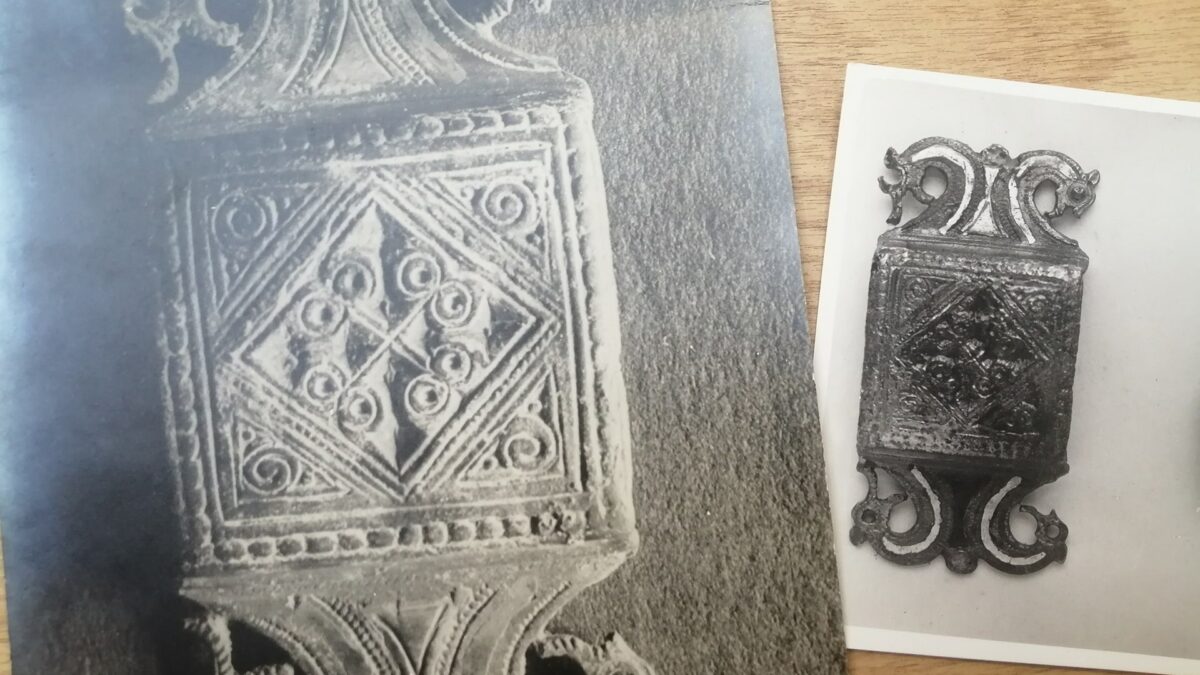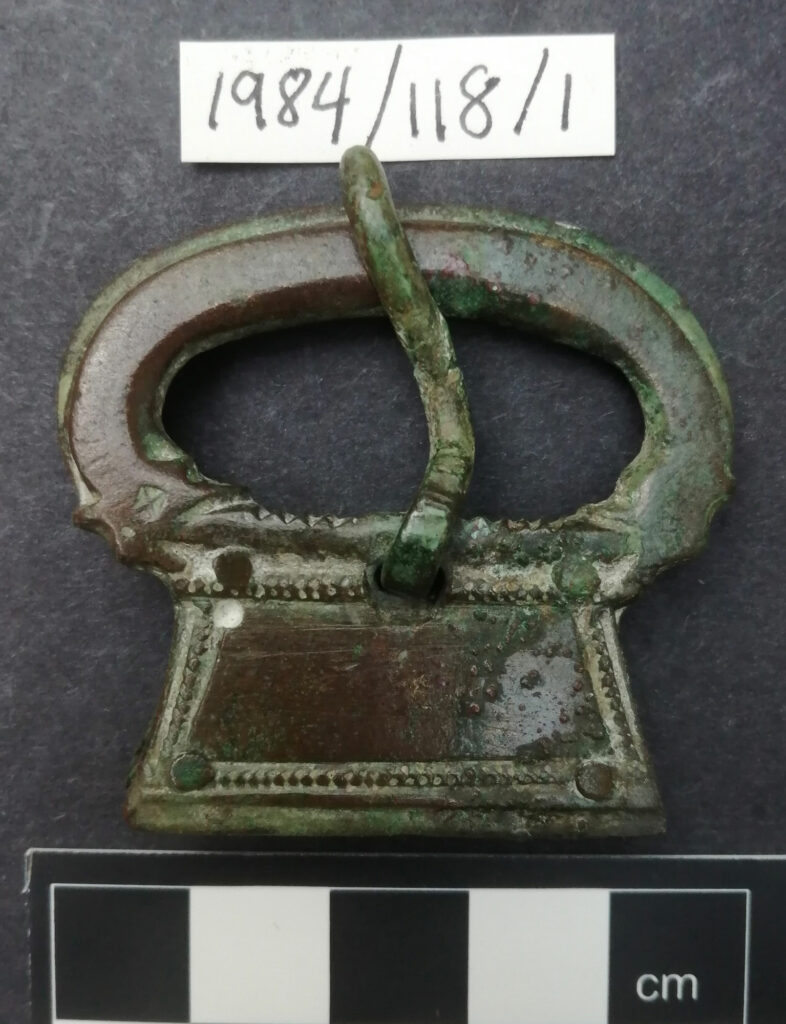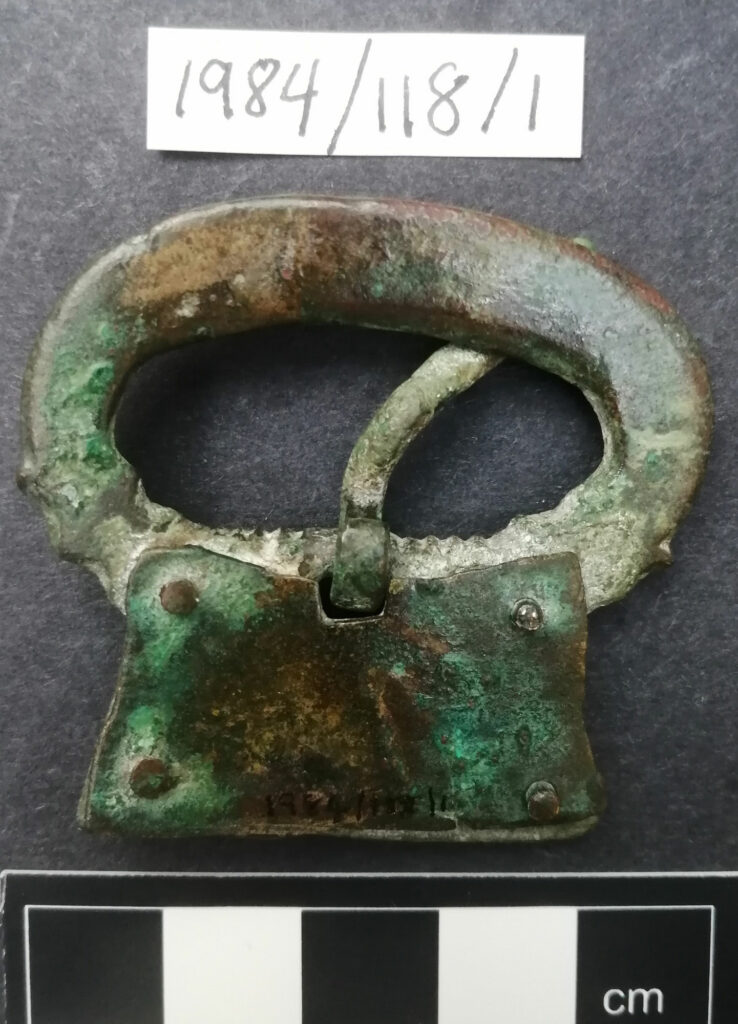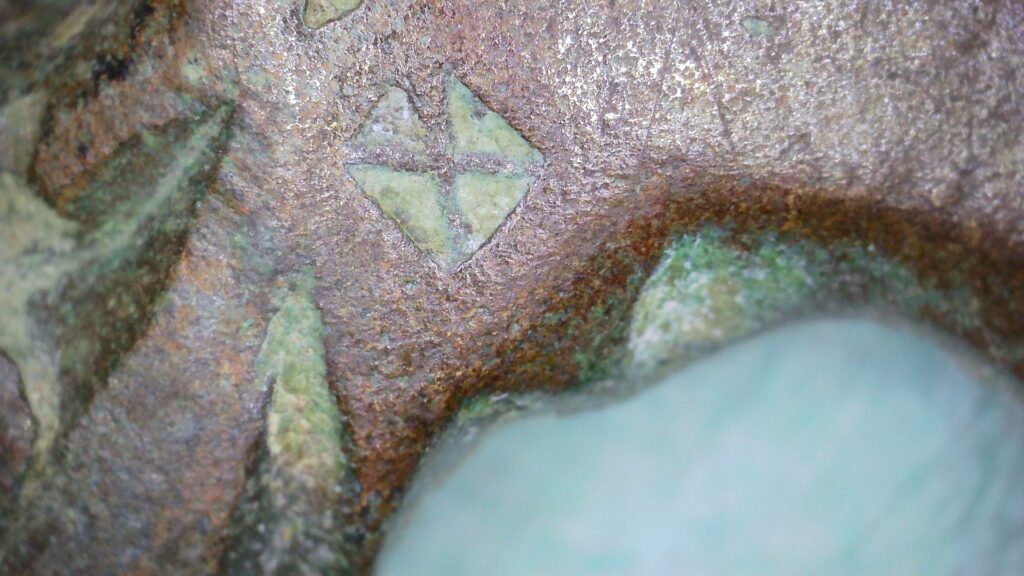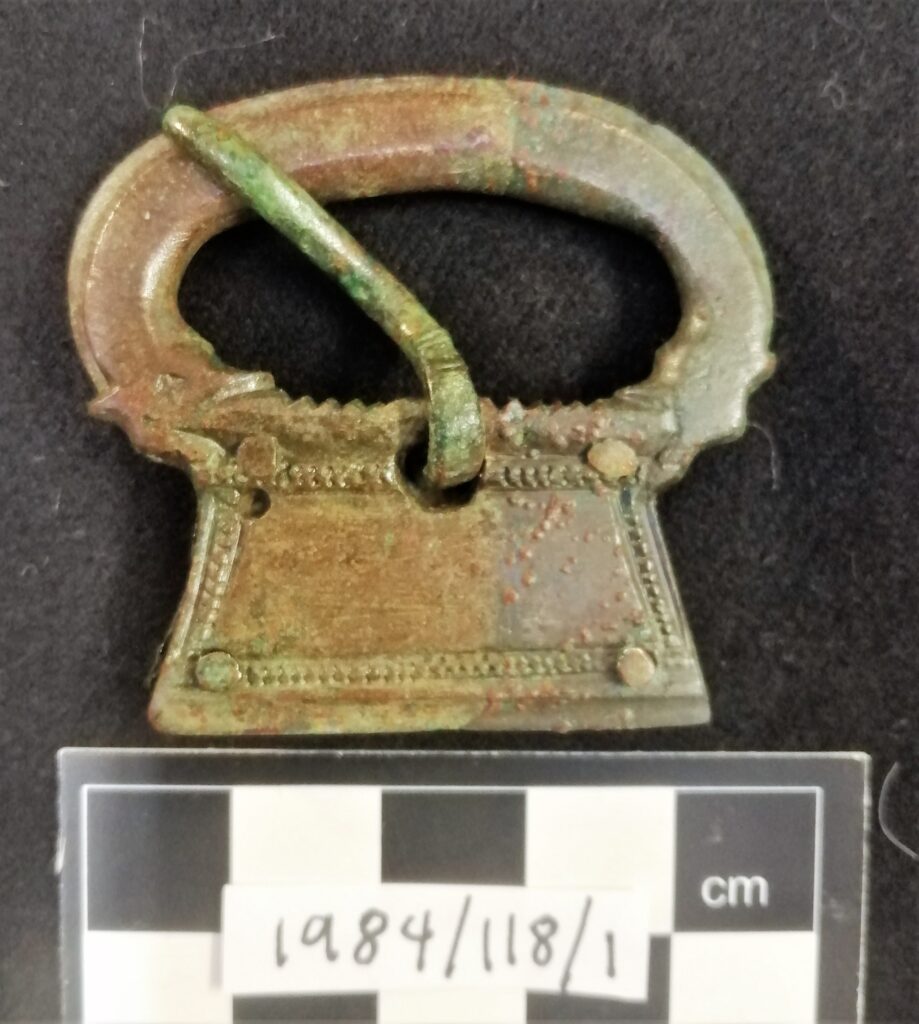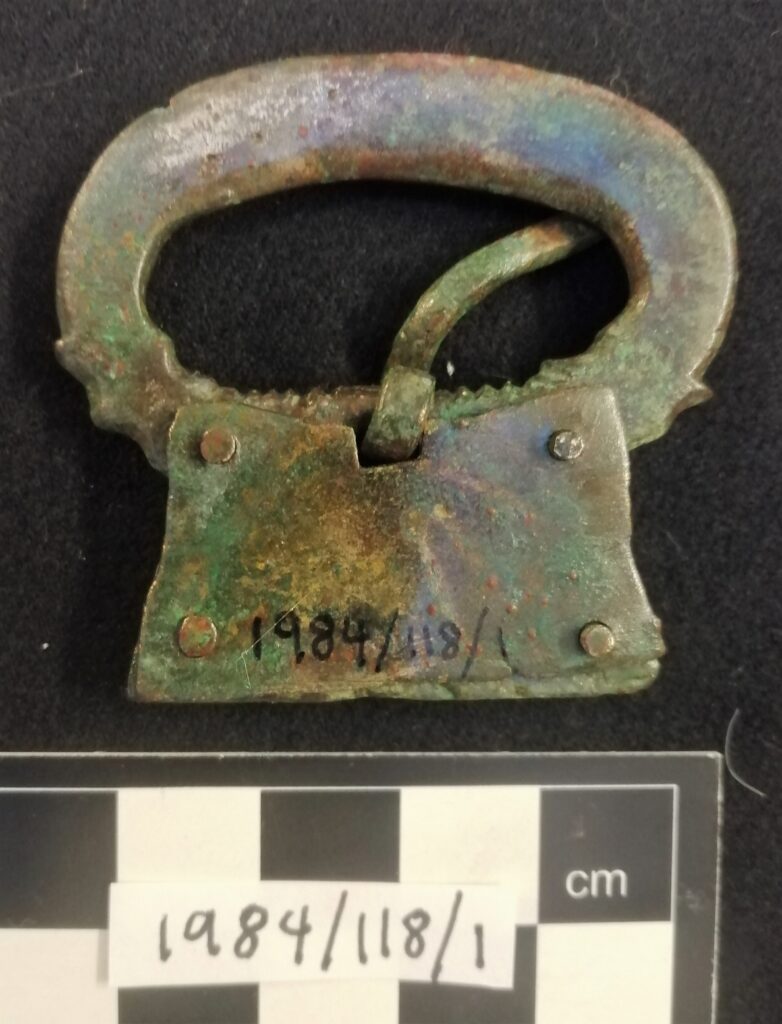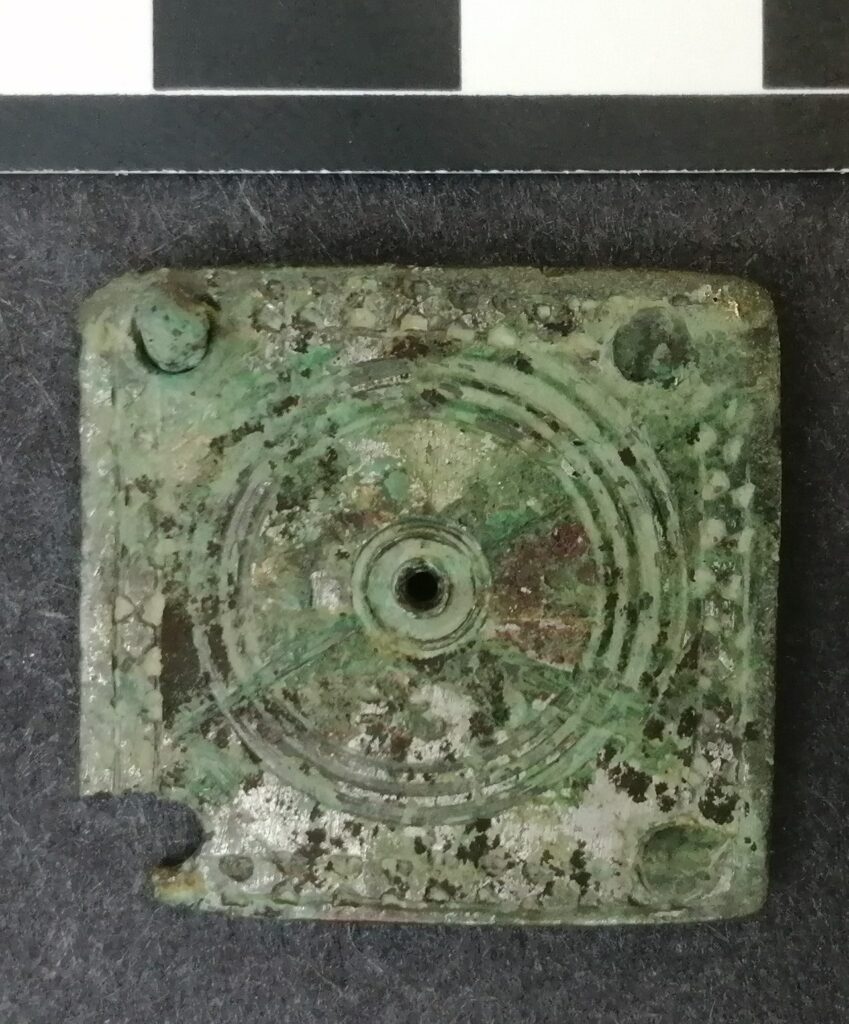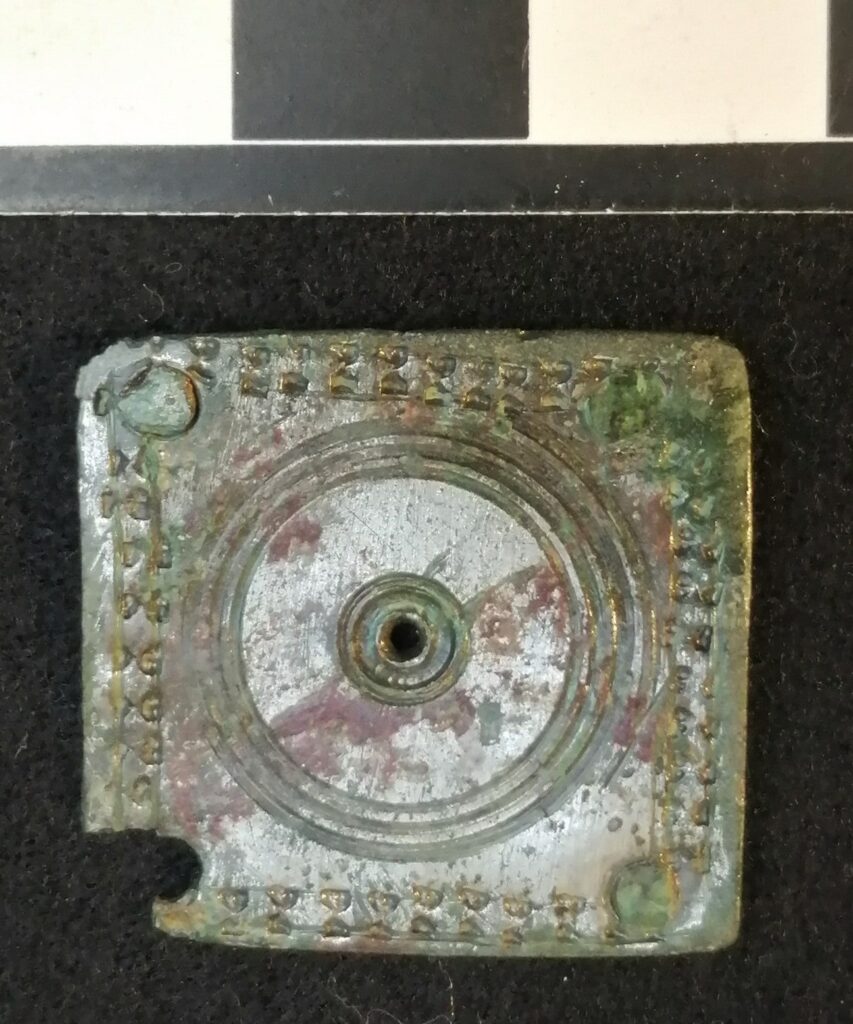Carola Del Mese, metal conservator
I have been invited to conserve some objects from Worthing Museum archaeology gallery, and in the last post I went through the objects, explaining what they are, where they were found and how old they are. In this post we will be taking a much closer look, as part of the conservation process called ‘assessment’.
In previous posts we discussed the objects chosen for conservation and the assessment process. Here I will be talking through the conservation treatment of some of those objects and a little about the reasoning behind those decisions from a conservation point of view.
Removal of degraded wax from a Roman military buckle
In a previous post we discussed a Roman military buckle with animal head decorations. The remains of a degraded wax coating were turning areas of the surface white, encouraging corrosion and obscuring details, so it was decided to remove this and apply a new coating. As the object was in stable condition with no active corrosion or fragile elements, the old wax could be softened by submerging in acetone, and mechanically removed. It is important to check for remains of any organic elements, for instance remains of leather in this belt plate, as leather remains would be damaged if any liquid were applied, making further research difficult. However, in this case there were no organic remains, so the object was submerged in a acetone in a sealed container and after an hour I gently brushed the surface with a bristle brush to remove the softened wax.Brushing removed most of the wax, however there were some detailed areas where wax build-up remained and I worked under the microscope carefully using a pin-vice and sharp thorn, eventually revealing more of the features. Even though the surface of the object is stable, it can still be damaged so great care is exercised when using sharp tools. Once the surface of the object was free from wax, I coated it with the same 10% Paraloid B48 and acetone solution as the other objects.
Revealing the details on a decorative mount
Finally, this small, Roman decorative mount had developed a coating of powdery green corrosion which was obscuring the decorative details. The front of the object appeared be ‘tinned’ to look silvery, and I could see that the tinning still survived under the green corrosion. Cleaning with swabs dipped in IMS removed some loose powder but not much, so I decided to use a chemical treatment to remove more of the corrosion and reveal some of the details.
I made a solution of 5% formic acid in de-ionised water and gently tested a small area of the surface using a swab, carefully monitoring the results. As a swab became green I changed it for a fresh one and gradually the surface was revealed. In some areas, removal of the green revealed cuprite underneath (a smooth, brown corrosion layer) and some of this was removed by the swabs and by gently rubbing with a wooden tool, which eventually revealed the tinned surface. If I felt that the cuprite was too adhered to be safely removed, then I stopped. Finally, I felt that as much had been removed as safely possible, and I cleaned the object thoroughly with IMS.
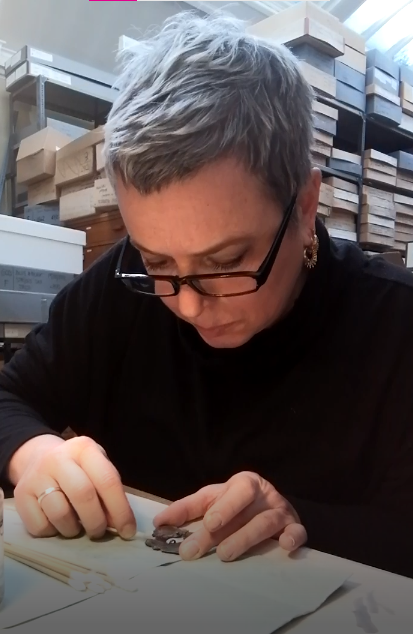
The assessment and conservation of these objects, safeguarding them for future generations, was made possible by a grant from the South East Museums Development Fund, and Arts Council England.
Images: Carola Del Mese and Worthing Museum


